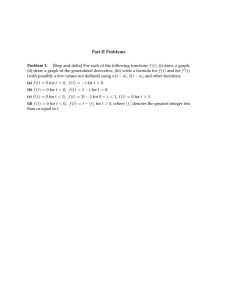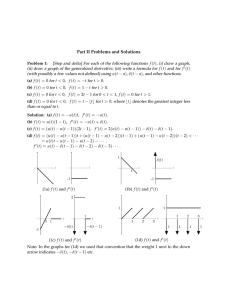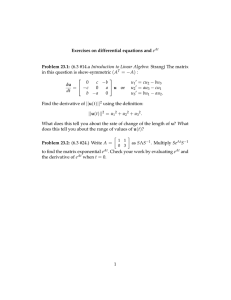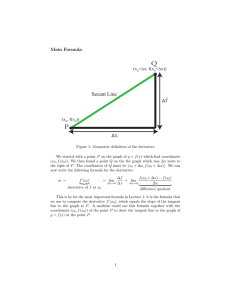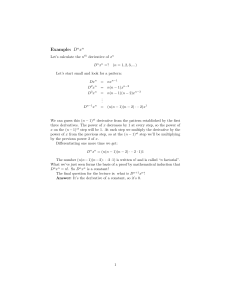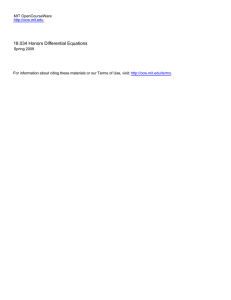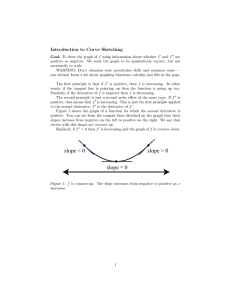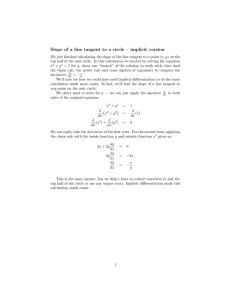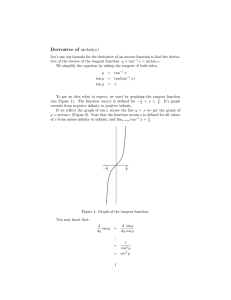Document 13737689
advertisement
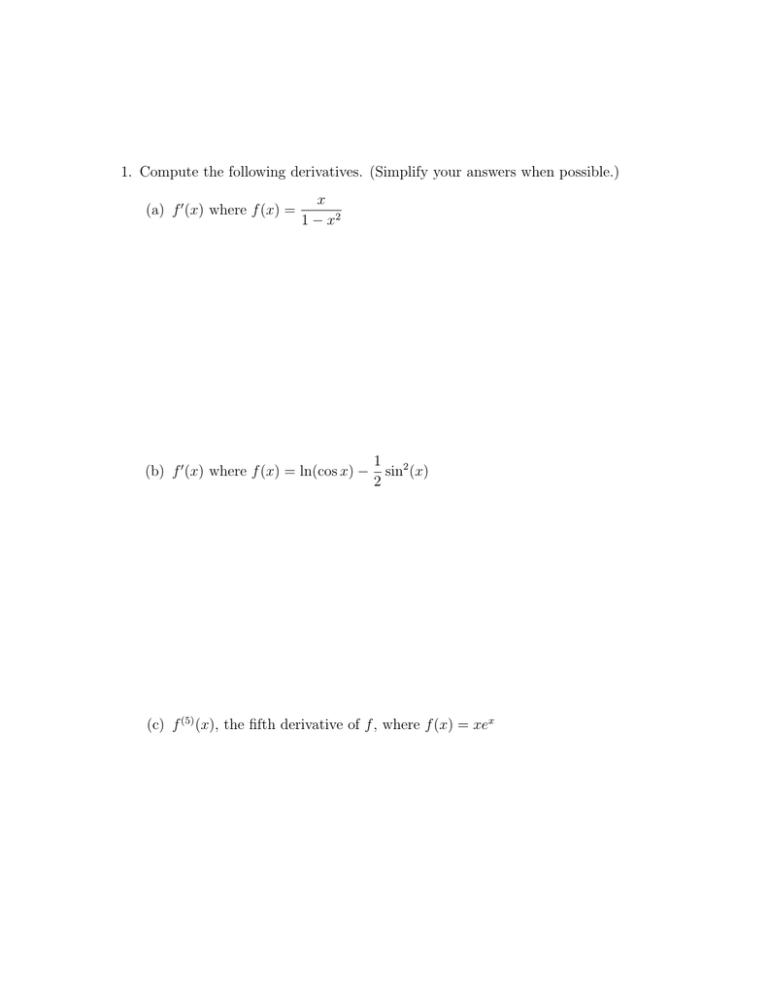
1. Compute the following derivatives. (Simplify your answers when possible.) (a) f � (x) where f (x) = x 1 − x2 (b) f � (x) where f (x) = ln(cos x) − 1 2 sin (x) 2 (c) f (5) (x), the fifth derivative of f , where f (x) = xex 2. Find the equation of the tangent line to the “astroid” curve defined implicitly by the equation x2/3 + y 2/3 = 4 √ at the point (− 27, 1). 3. A particle is moving along a vertical axis so that its position y (in meters) at time t (in seconds) is given by the equation y(t) = t3 − 3t + 3, t ≥ 0. Determine the total distance traveled by the particle in the first three seconds. 4. State the product rule for the derivative of a pair of differentiable functions f and g using your favorite notation. Then use the DEFINITION of the derivative to prove the product rule. Briefly justify your reasoning at each step. 5. Does there exist a set of real numbers a, b and ⎧ −1 ⎪ ⎨tan (x) f (x) = ax2 + bx + c, ⎪ ⎩ 3 1 2 x − 4 x + 5, c for which the function x≤0 0 < x < 2 x ≥ 2 is differentiable (i.e. everywhere differentiable)? Explain why or why not. (Here tan−1 (x) denotes the inverse of the tangent function.) 6. Suppose that f satisfies the equation f (x + y) = f (x) + f (y) + x2 y + xy 2 for all real numbers x and y. Suppose further that f (x) = 1. x→0 x lim (a) Find f (0). (b) Find f � (0). (c) Find f � (x). MIT OpenCourseWare http://ocw.mit.edu 18.01SC Single Variable Calculus�� Fall 2010 �� For information about citing these materials or our Terms of Use, visit: http://ocw.mit.edu/terms.
